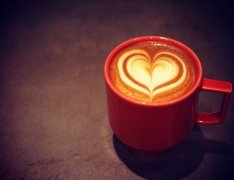Roasting Technology of Fine Coffee talking about Coffee roasting by Stephen Diedrich
Stephen Diedrich is the founder and president of the American Diedrich coffee roaster manufacturing company. Taking advantage of the opportunity that Viti invited him to Taiwan to participate in the coffee exhibition, I first conducted an in-depth interview with him for more than two hours on behalf of Coffee Telli magazine on November 25th. Stephen talked eloquently about his entrepreneurial process, the concept of designing the roaster and the mental process of his development, and also gave some suggestions to coffee people in Asia. These will be published in the recent issue of Coffee Tweei magazine.
At 2: 00 p.m. on November 26th, Stephen held a coffee roasting lecture at Viti, the general agent in Taiwan. Stephen told me in advance that he would share a lot of their baking ideas and techniques, but it was not until he participated in the lecture that he realized that Stephen brought a solid course with materials. The lecture lasted more than four heads, ranging from the design concept of the roaster. To the creation, detection and application of baking curve (Roast Profile), the explanation is very clear.
The following is a summary of my interview, as well as the contents of Viti's lecture, to briefly record and share some of the baking techniques and ideas conveyed by Stephen Diedrich. For more information, please refer to the recently published "James on Coffee" column in Coffee Trapi magazine.
* the reason why Diedrich uses infrared heater: using clean air to bake, good energy conversion efficiency, health, environmental protection, stability.
* Stephen's father, Carl, designed and manufactured coffee roasters as early as the 1960s. The early models had a water curtain dust collection design. By observing the roasting exhaust, the water became very dirty, making Stephen feel that traditional open fire roasting was like roasting coffee beans with car exhaust, so he came up with an improved way to use infrared heaters.
* the design concept of the heat exchanger is inspired by Stephen engaged in aircraft maintenance and German Audi and Porsche automobile machinery maintenance. The air-cooled design of the aircraft engine is "anti-designed" to make it the receptor of infrared radiation heat, and then heat the clean ambient air to bake coffee beans.
* characteristics of traditional open fire nozzles: the main heat source comes from heated air and the secondary heat source is radiation. The temperature of hot air is not easy to be stable and is directly affected by airflow intensity and firepower intensity.
* characteristics of infrared heaters: the main heat source is radiant heat and the secondary heat source is convective heat. The temperature of the hot air remains stable.
* the first explosion temperature of the Diedrich roaster is constant at 197C, while the second explosion temperature varies according to the structural density of the beans.
* Stephen he personally suggested that the baking temperature be measured in "Fahrenheit" because the Fahrenheit measurement is finer than Celsius, easier to observe and record, and slightly different.
* when recording baking, every time you write down the temperature, you should immediately make a simple mathematical calculation to calculate the extent of the temperature rise (temperature rise ratio) and observe its change.
* Stephen recommends that the QC cup be tested "immediately" after baking, even if you can only drink 20% to 30% of the cooked taste, because you can immediately adjust and re-bake according to the test results to achieve the best baking curve.
* the higher the moisture content of raw beans, the sweeter the baking result.
* the weight loss ratio preferred by Stephen is between 13.5% and 15%, and that of deep baking is more than 18%. He personally does not prefer baking results with a weightlessness ratio of 15 to 17%, because this degree loses sweetness and begins to lose other advantages, but he has not yet got enough deep-baked smell, so it is better to get deep-baked smell directly.
* the weight of coffee beans before and after roasting should be measured in each oven and the weight loss ratio should be calculated.
* when you find that the weightlessness ratio becomes higher, it may be: 1. Your baking time has increased by 2. Your baking degree has been deepened by 3. Your airflow (throttle setting) is stronger than before.
* when you find that the weightlessness ratio becomes lower, it may be: 1. Your baking time has been shortened by 2. Your baking degree has become shallow by 3. Your airflow (throttle setting) is weaker than before.
* the heat source of the Diedrich roaster is designed to be 70% convective heat and 30% heat conduction
* through air flow control, the baker can control the ratio of convective heat to conduction heat.
* when blockage occurs in your exhaust pipe due to carelessness in cleaning, the air flow becomes weaker and the convective heat is reduced, and you have to increase your firepower in order to maintain the best curve, which leads to an increase in the use of conduction heat, which eventually leads to different baking results.
* Stephen believes that most of the good baking curves are S-like or inverted M-shaped, not straight (James added: this is true in the case of American baking. Not in terms of other baking cultures.)
* what the baker should do:
1. Test the best curve of each bean.
two。 Try to reproduce the best curve when baking
* five steps to develop a baking curve:
1. Determine the baking depth
two。 Determine the "best time" to reach this baking depth
3. Develop an ideal temperature rise slope
4. Based on the results of the previous steps, a suitable airflow setting is developed.
5. Re-detect the heating curve according to the air flow setting result of the previous step
6. Re-check whether the setting of baking depth needs to be adjusted according to all the above variable settings.
* what you should do when baking is to "follow" your best curve and try to keep up with it all the time, not "record". You don't have time to take notes when following and reproducing the curve.
* the best curve should be updated at least three to four times a year, and should be retested as long as the raw bean batch is different.
Always keep the roaster and pipes clean. If they are not clean, the baking curve you have developed is completely useless.
* Stephen recommends that you decide the timing of the oven according to the color, constantly pull out the sampling stick and observe it repeatedly, and take samples again or twice after reaching the set color, to make sure that the color is what you want, and before the beans are changed to other colors, open the oven door to let the beans out. The above process is completed in 10 seconds.
* if you let the beans out of the oven "immediately" as soon as you see the color, it will easily cause your baking to become lighter and lighter before you know it.
Coffee roasting has always lacked advanced and open courses and information, not to mention the first-hand information from the founder and president of the world-famous coffee roaster factory, which shows the precious value and hard-won value of this lecture. Although what he studies and is good at is American baking, which is very different from the Nordic roasting that I am good at, through such a rich lecture, more people can understand the details of roasting and realize that good coffee is not easy to be roasted. I believe that such sharing will be like a stone thrown into the pool, and the ripples will gradually spread, making the coffee world more progressive. -James
This article is excerpted from: the baking hand on the roof
Important Notice :
前街咖啡 FrontStreet Coffee has moved to new addredd:
FrontStreet Coffee Address: 315,Donghua East Road,GuangZhou
Tel:020 38364473
- Prev

Italian coffee basic knowledge coffee flower skills
The basic steps of coffee flower heart diagram: 1. Slowly inject milk into coffee, pay attention to grasp the height, do not destroy the coffee fat on the surface, the injection point of milk determines the flower pattern and basic position, we choose the milk injection point can be a little bit behind the center point of the cup. 2. When the cup of coffee and milk is close to 2/3 of the capacity, a lump has appeared around the injection point
- Next

Introduction to three treatment methods of high-quality coffee beans
Dry process introduction (sun processing drymethod) drying method: with soft sour taste and mild bitter taste. This method is used in Brazil, Ethiopia and Yemen. Disadvantages: vulnerable to weather, defective beans and foreign bodies are more likely to mix. Process: coffee is either dried naturally on the patio, or dried by machine, or both. The method of treatment is
Related
- What is the meaning of lactic acid fermentation with coffee bean treatment?
- How to judge the state of foam by sound?
- How does the latte pull out the unicorn pattern? Come to get for a little trick to improve the flower pull!
- Will flower pulling affect the taste of the latte?
- Do you know the history of coffee?
- The difference between honey treatment and sun washing what is raisin honey treatment?
- What kind of milk can a novice use to make coffee foam to keep the foam longer? The correct method and skills of milking tutorial sharing
- Why do washed coffee beans taste sour? Flavor characteristics of washed Coffee
- Introduction to the skill of how to practice the size and height of water injection around the circle of hand-brewed coffee
- How do beginners practice coffee flower drawing from scratch?

